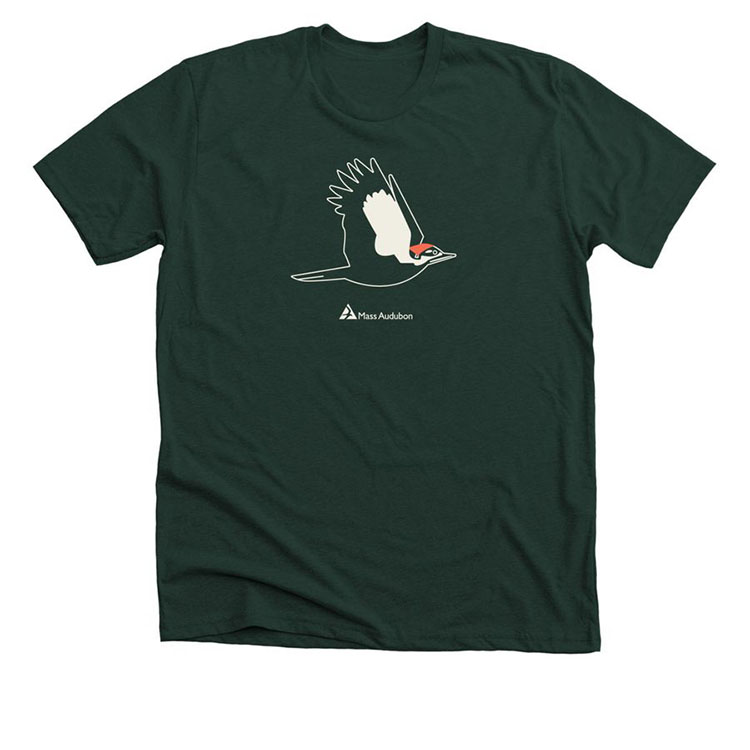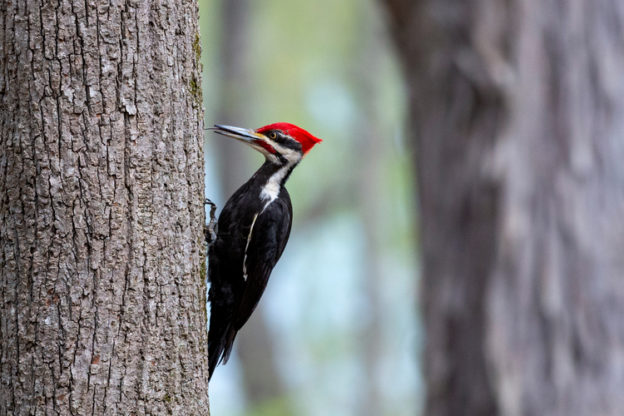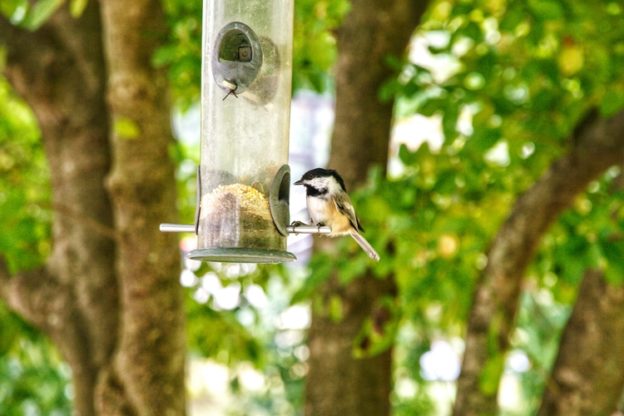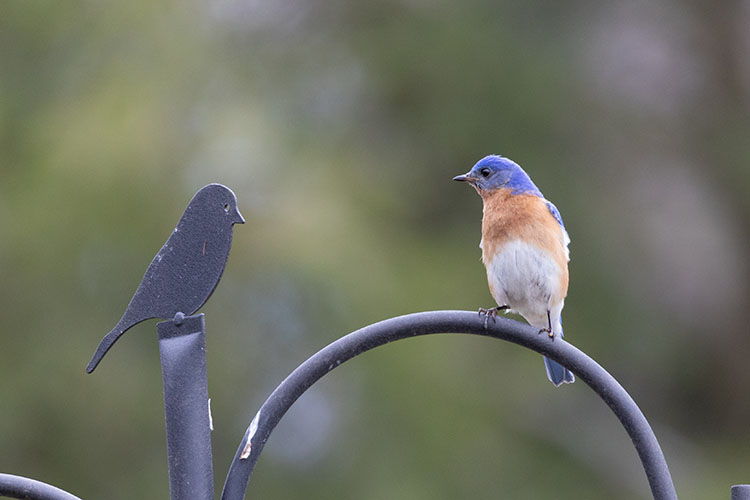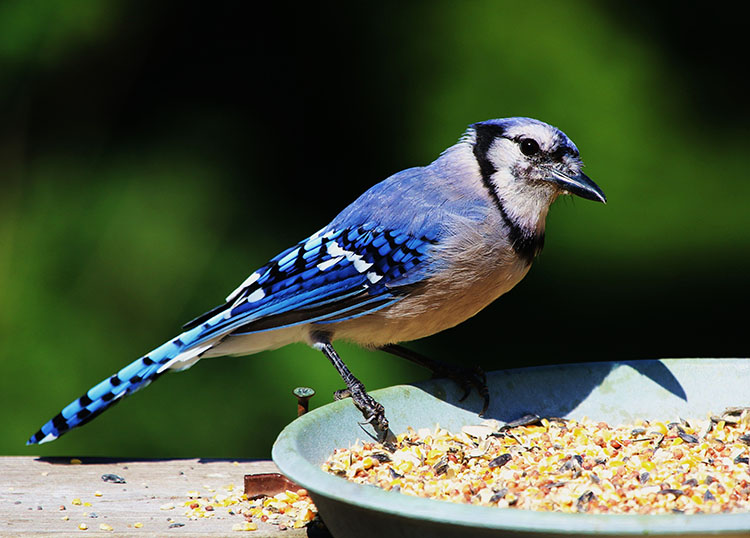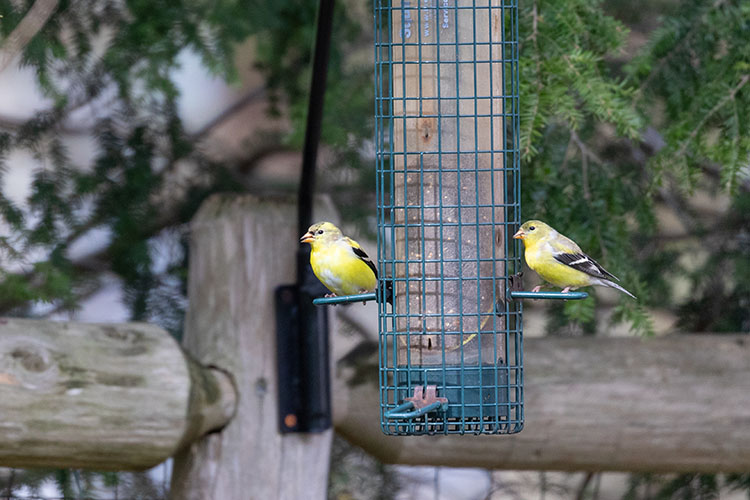Did you know there are seven different types of woodpeckers that breed in Massachusetts? Among them are the common Downy Woodpecker, Red-bellied Woodpecker, and Northern Flicker. More elusive, despite it’s size, is the Pileated Woodpecker.
Keep reading to learn more and check out our latest shirt design featuring the this striking bird.
Identification
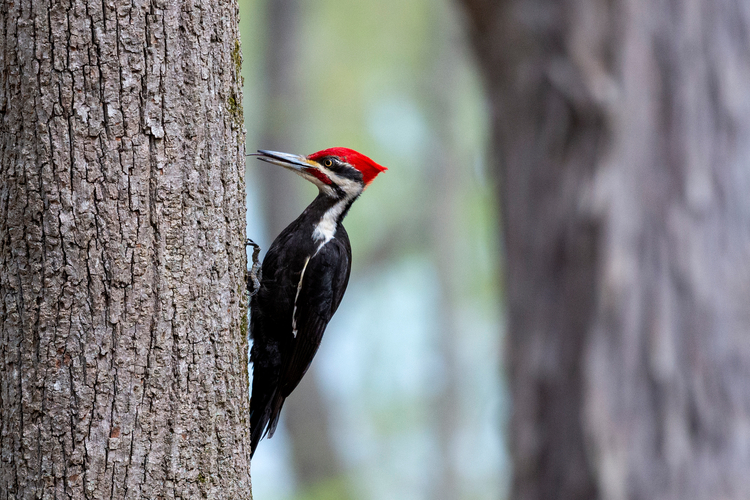
This crow-sized bird has a black body with white patches on the wings and is adorned with a flaming red crest.
While they can be hard to come across, you may hear their drumming or their high-pitched call echo through the woods.
Woodpecker Adaptations
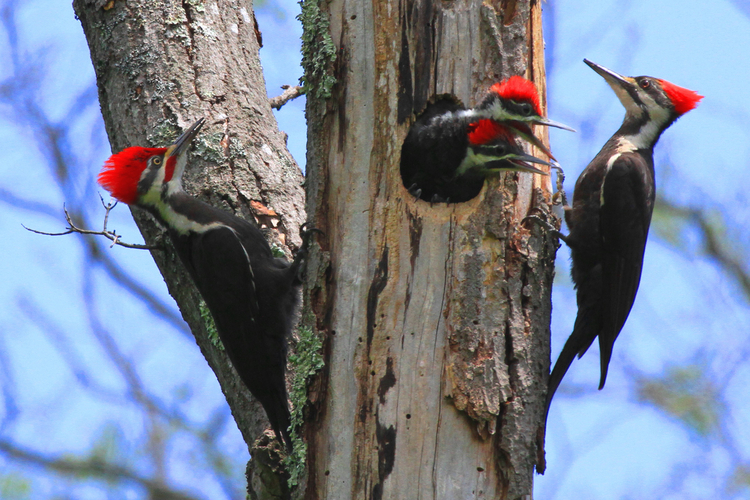
One unique adaptation of woodpeckers is their toes. Their feet have two toes pointing forward and two pointing rearwards with sharp-pointed claws that enable them to scale tree trunks and other vertical surfaces to look for food and shelter.
In addition, Pileated Woodpeckers, like other woodpeckers, have stiff tail feathers that act as props (like a third leg) to help keep them steady as they climb.
Drilling vs. Drumming
Drumming and drilling are two different activities performed by woodpeckers. When a woodpecker drills, they are chipping away wood in search of food or creating a cavity for nesting. Pileated Woodpeckers chip large rectangle holes to pick on carpenter ants, termites, and other insects. And they drill large nesting cavities into dead or decaying trees; the opening hole is typically between 3.5 to 4.5 inches.
Drumming, on the other hand, is done to attract a mate or mark the woodpecker’s territory. While Pileated Woodpeckers drum throughout the year, males drum in late winter and early spring to establish and defend its territory. The drumming sound of a Pileated Woodpecker is low and methodical, only lasting a few seconds before drifting back into silence. Their straight pointed bills and reinforced skulls absorb the constant shock of drilling and drumming, protecting their brain.
Sometimes, you may hear a woodpecker drumming on your house. Woodpeckers drilling on houses can be a problem, as they will occasionally create holes in the trim or siding. If they are causing significant damage, there are some deterring options.
Supporting Pileated Woodpeckers
Not only does the Pileated Woodpecker’s drilling support the nutrients cycle by expediting a dead tree’s decomposition rates, but it also creates essential nesting sites for other animals that can’t create their own cavities. Animals like owls, bats, squirrels, and even fishers, rely on abandoned excavation sites to shelter or make their nests.
As outlined in our Action Agenda, Mass Audubon is dedicated to protecting and supporting the different natural habitats in Massachusetts, including the Pileated Woodpecker’s wooded ecosystem.
Show your support by wearing our new custom printed Pileated Woodpecker shirt and help Mass Audubon achieve our mission to protect the nature of Massachusetts for people and wildlife!
